
Here Are The 8 Two-wheelers Launched In March 2022
- Mar 31, 2022
- Views : 5679

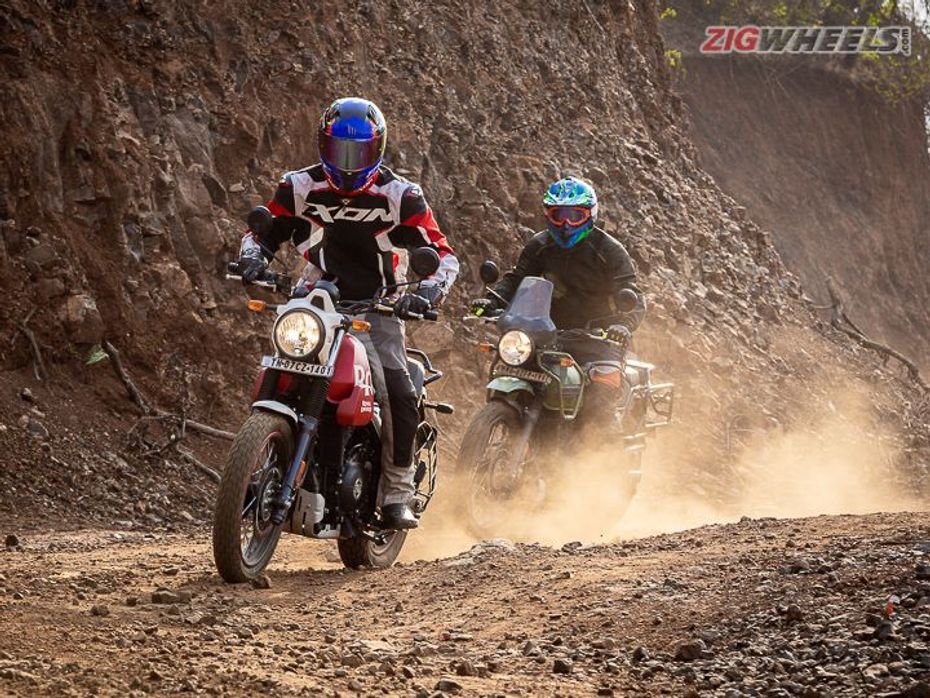
Himalayan Lite – That’s what Jehan called the Scram 411 in his first ride review of the bike. Now, that ain’t a bad thing for the new motorcycle given how the Himalayan has won hearts for being a friendly, yet capable machine that can conquer the most daunting terrains. But on the flip side, the Scram would make the Himalayan obsolete, won’t it? After all, you save Rs 11,000 over the Himalayan and get yourself something that can do almost everything that the ADV does. So, we compared these two bikes in five different aspects to see which offers more bang for the buck.
Through The Urban Jungle
The smaller front wheel, slightly lower seat height and the lesser weight of the Royal Enfield Scram 411 should make it a clear winner, right? Well, things aren’t that straightforward here. Sure, the Scram’s 19-inch front wheel results in a tighter turning circle radius and makes it easier to maneuver through traffic. But at 194kg (wet), it is still no featherweight and moving it around parking space is almost as cumbersome as the Himalayan.
| Scram 411 | Himalayan | |
| 0-60kmph | 4.14s | 4.44s |
| 0-80kmph | 6.85s | 7.48s |
| 0-100kmph | 11.41s | 12.26s |
| Scram 411 | Himalayan | |
| 30-70kmph (3rd gear) | 5.69s | 5.62s |
| 40-80kmph (4th gear) | 7.24s | 7.10s |
Despite what Royal Enfield claims, the peppier ignition map hasn’t really made much of a difference in acceleration numbers. It is just 0.8 seconds quicker than the Himalayan to a 100kmph, which isn’t really apparent from the saddle.
So, while the subtle improvements give the Scram an edge over the Himalayan when tackling everyday duties, the difference isn’t substantial.

Beyond The Ventured Territories
The Himalayan should steal the show here, right? Well, surprisingly the Scram puts up some real fight on this front. Of course, the lack of windscreen means you face a lot of windblast on the Scram, and while that is a boon in the sweltering summer heat, it plays against you if you go touring in the colder months, or even in monsoons.
That said, the single piece saddle of the Scram is longer and more accommodating than the Himalayan’s. Adding to that is the fact that the seat uses a firmer and thicker foam means you can spend more hours on the saddle comfortably without worrying about a sore derriere.
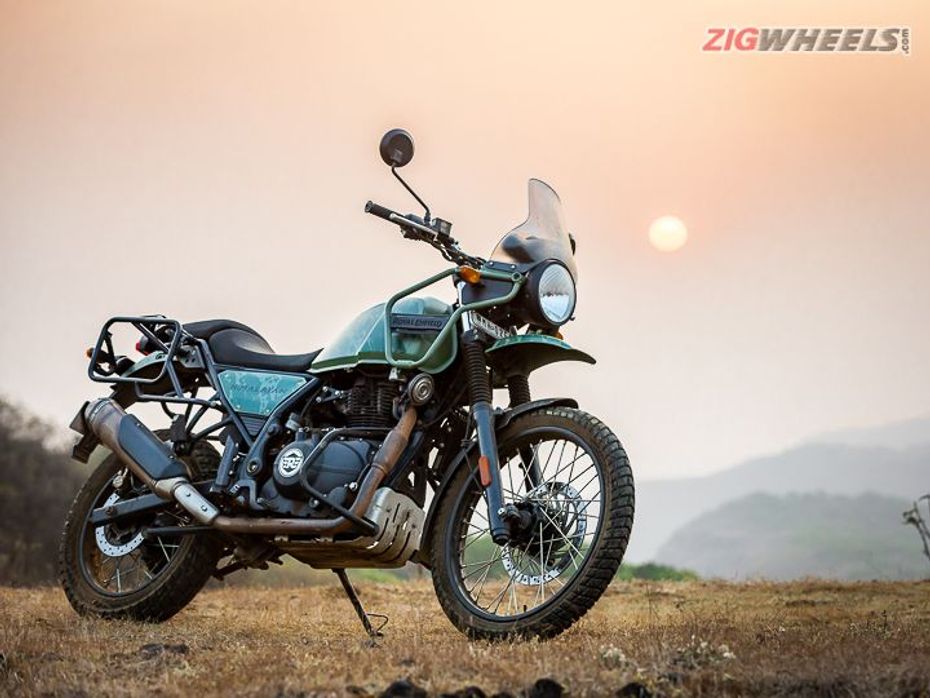
If you intend to carry luggage on your bike, both the REs can be fitted with the saddle stay and panniers from the company’s catalog of official accessories. Alternatively, you can fit your bike with some aftermarket saddlebags to save some moolah.
Interestingly, despite having the same engines, the refinement levels on both the motorcycles are different. With the Scram, the gear shifts are smoother, and even when doing triple digits, the vibrations are contained.
| Fuel efficiency | Scram 411 | Himalayan |
| City | 38.23kmpl | 32.04kmpl |
| Highway | 35.11kmpl | 39.96kmpl |
The lack of wind protection greatly affects the Scram’s mileage on the highways. However, thanks to the less bulk it carries, the fuel efficiency in the city is better than its ADV sibling.
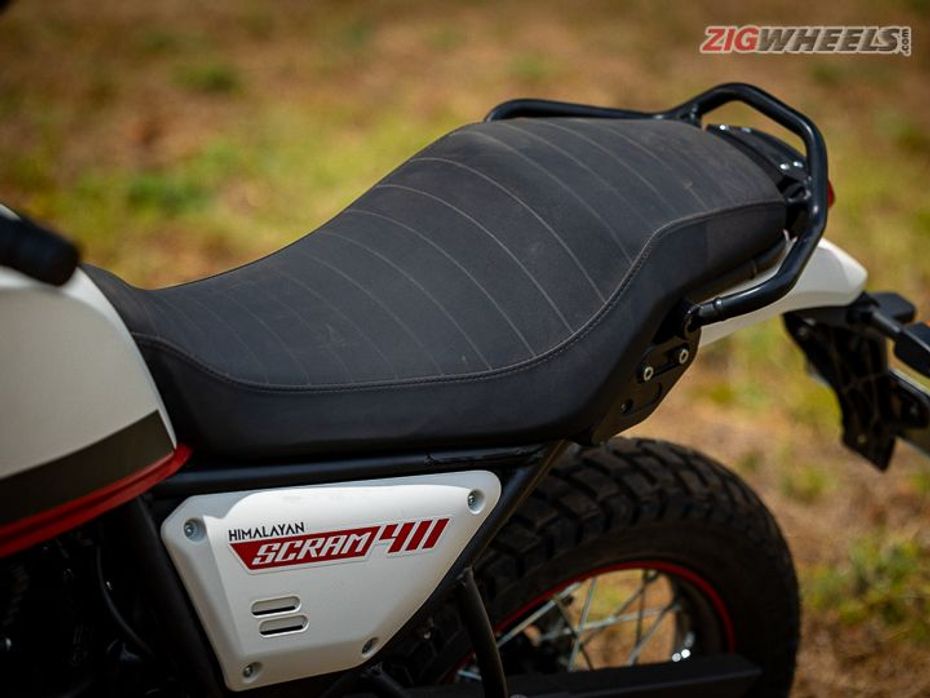
From The Back Seat
Things are completely opposite when you take the pillion seat on these bikes. The Scram’s longer rider seat means there’s slightly less room for the pillion. On the other hand, the Himalayan not only has a roomier pillion seat but also uses a plusher foam. In addition to this, thanks to the tail rack, mounting luggage, even with the pillion would be simpler.
The Fun Quotient
The Royal Enfield Scram takes the cake here. Its tauter suspension, the smaller front wheel and the lack of bulk on the front end makes it a quick steering motorcycle, unlike the Himalayan which feels a bit lazy. Furthermore, the Scram feels sure footed through the corners, allowing you to carry more speeds. The Himalayan just tends to feel a little floaty and unnerving when cornering hard.
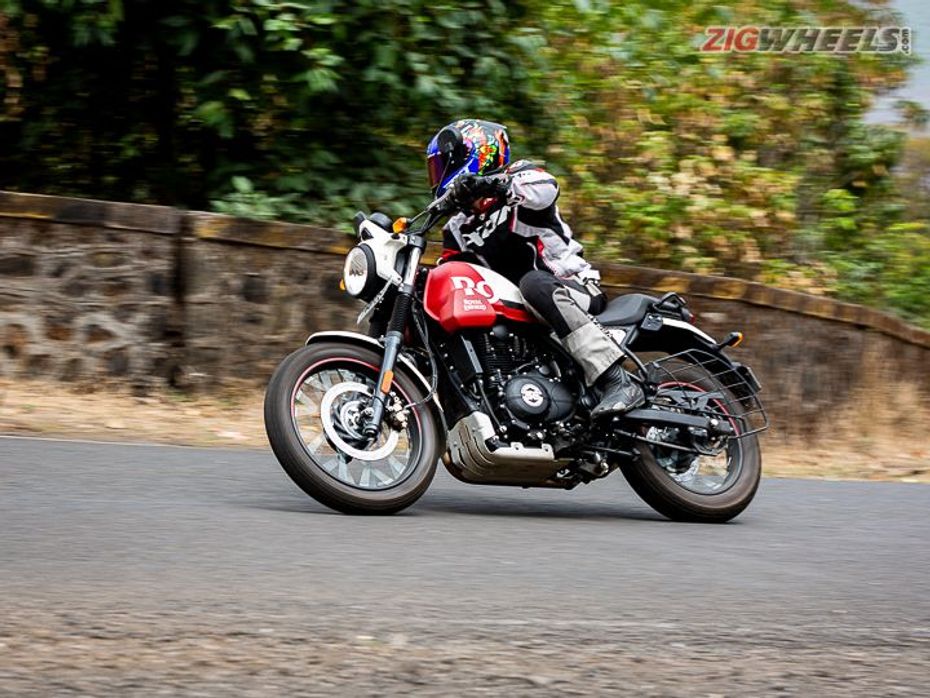
Out On The Trails
With the Himalayan’s 21-inch front wheel, more suspension travel and a softer tune, all work in its favour when venturing off the beaten path, and is definitely better at tackling some extreme terrain. However, amateurs will love the friendliness of the Scram. Its front suspension has slightly less travel than the Himalayan, yet it doesn’t bottom out when pushing hard.
But as you hone the art of off-roading, the need for switchable ABS on the Scram sticks like a sore thumb. Though simply removing the sensor on the rear wheel does the trick, the option to cut the ABS at the rear wheel should have been provided straight from the factory, especially given that the Himalayan already has it.

Goodbye Himalayan?
The Himalayan has an edge over the Scram when it comes to touring and off-roading, but there’s a workaround to the Scram’s shortcomings. Royal Enfield’s new bike not only offers a more engaging riding experience, but you also end up saving quite a lot of money. In fact, even with the optional Tripper navigation pod on the Scram (additional Rs 5,000), you can buy saddle bags and still have some spare cash for more accessories.
So, where does that leave the Himalayan? For now, seasoned off-roaders might still opt for RE’s ADV, but soon the baton will be passed to the upcoming Royal Enfield Himalayan 450LC. While the new bike will be meant for some serious dirty dancing, the Scram will continue to entice people who are just stepping into the world of off-roading.
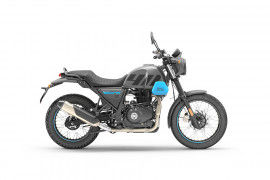

Here Are The 8 Two-wheelers Launched In March 2022

Touring On The Royal Enfield Himalayan 450: 5 Things I Learnt

All-New Royal Enfield Himalayan Review: An Adventure Redefined

Viaterra Holeshot Pro Motorcycle Riding Gloves Review

Royal Enfield Guerrilla 450 First Ride Review - The Best Retro...

Triumph Speed 400 First Ride Review: India’s Best 400cc Naked?

Royal Enfield Himalayan vs Scram 411: Real-world Performance Compared
 Royal Enfield Himalayan 450
Royal Enfield Himalayan 450
 Royal Enfield Guerrilla 450
Royal Enfield Guerrilla 450
 Triumph Scrambler 400 X
Triumph Scrambler 400 X
 Triumph Speed 400
Triumph Speed 400
India's largest automotive community
 Royal Enfield Classic 350
Rs. 1.93 Lakh
Royal Enfield Classic 350
Rs. 1.93 Lakh
 Royal Enfield Continental GT 650
Rs. 3.19 Lakh
Royal Enfield Continental GT 650
Rs. 3.19 Lakh
 Royal Enfield Hunter 350
Rs. 1.49 Lakh
Royal Enfield Hunter 350
Rs. 1.49 Lakh
 Royal Enfield Bullet 350
Rs. 1.73 Lakh
Royal Enfield Bullet 350
Rs. 1.73 Lakh
 Royal Enfield Meteor 350
Rs. 2.05 Lakh
Royal Enfield Meteor 350
Rs. 2.05 Lakh